July 2, 2017
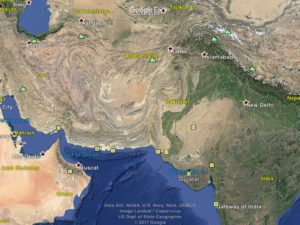
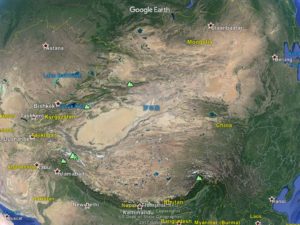
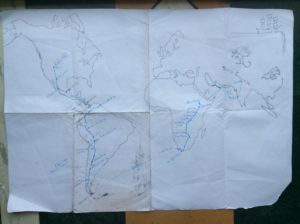
Flying from Muscat to Mumbai, India meant a few degrees drop in temperature but increased humidity. Hotter/dryer is probably more tolerable but neither place qualifies as an ideal climate. Indian culture has some differences from most of the rest of the world, the first clue being cows on busy inner city streets. If you’ve ever wondered what a cow eats in the middle of a big city the answer is garbage, wet garbage. I ate at a McDonalds (yes, they’re here too and serve masala flavored burgers) and when bussing my table had a choice between disposing in dry and wet garbage bins. The wet garbage is then put out on the street where, as you can imagine, there are mountains of it. Traffic is horrendous and at first glance utterly chaotic, but after a while patterns emerge and it becomes somewhat manageable. You’re at least as safe as a cow in it and if you stop dead in the middle of an intersection to look at the map, the cars, motorcycles, tuktuks, busses, carts, along with the cows themselves, will just go around you. I did however see a calf-motorcycle collision that both walked away from and one bicyclist hit by a motorcycle; no one hurt but the bike forks got mangled. The first days were hard and I was often in a sort of road rage state dealing with the crazy driving habits. One car bumped me on the arm as it passed and folded the breakaway mirror. While stopped at an intersection a tuktuk from behind nudged against a pannier and pushed me forward a few inches until he could slip passed. I was so blown away by that maneuver I couldn’t even get mad but made sure I took it out on the next person. In general, the sense of personal space is wholly different from the West. Standing in a line for anything you’ll be bumped, jostled and groped. If you leave a bit of space between you and the person in front of you it will be soon filled by the person behind you.
After a while it became clear that I was about the only one with a problem with the driving habits. Cutting people off is the norm. Traffic lights in Mumbai were pretty much advisory and any possibility for working your way through an intersection is fair game. The paradox is that it’s really more efficient and though you never go very fast, you keep moving. The same traffic jams in the West that are at a dead stop would tend to grind forward here. All the cutting off, weaving, running of red lights has the effect of maximizing movement and, at least qualitatively, appears no less safe than American cities. The rules are certainly laissez faire but the thing that makes it work is a higher level of tolerance. Getting cutoff to an American is to an Indian just slowing a bit to keep overall traffic flowing better. By the time I got to Delhi I was pretty much acclimated.
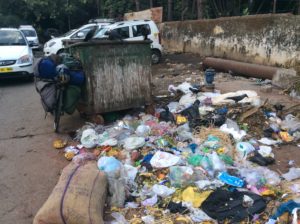
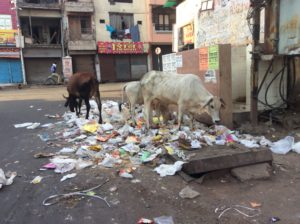
If you’re a vegetarian you’ll find plenty to eat so long as you don’t mind deep fried everything. I’m sure they use vegetable oil, but it all becomes too much after a while. The food is invariably spicy hot as well. I never did see a full sized grocery store (they must exist), only the small shops with bins of basic grains, lots of dal combinations, lots of cheap candy and soft drinks. Many sell the groceries over the counter like you’re buying auto parts- awkward enough, but doubly so when you don’t speak the language. I tried cooking grocery foods a couple of times but soon gave up. For several long stretches it was coffee in the morning and deep fried anything (except meat!) after that. The fruit stands saved me and I would eat several bananas and mangos a day, oranges when I could find them. Alcohol cannot be sold within 500 meters of a main highway, so liquor stores were hard to find. Besides that it was ridiculously expensive. I stayed on the wagon through most of India.
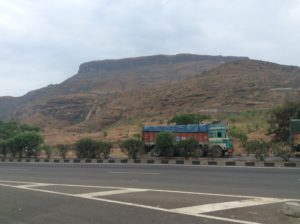
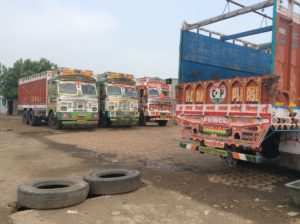
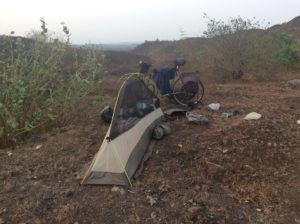
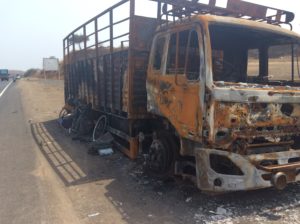
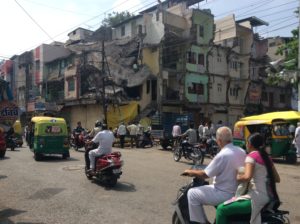
India’s population is around 1.3 billion people. One source has them now edging out China but most have China still in the lead. Regardless, India is expected to pass China in the near future. To put things in perspective, Africa has just over a billion people but ten times the area of India. North America, South America and Australia combined have about a billion people and a little less than double the area of Africa. India’s crowded but I did find stretches of road with wilder territory and places to camp. Inland from the west coast of India and stretching from the tip to well north of Mumbai are the Western Ghats mountains. They’re predominantly low hills with the highest point around 9000 feet- no competition for the Himalayas. The Ghats, though, are known for biodiversity and thought to have many unrecorded plant species. Crossing through them affords some relief from continuous humanity. Much of it is agricultural but stands of trees along fenceless highways offered good camping. I had some deer hanging around a camp one morning.
The Western Ghats are home to many of India’s tiger reserves. Tigers living truly in the wild are a thing of the past in India, but country wide there are over 50 reserves and around 2000 tigers, a number that has increased in the 21st century. Tourist dollars are the tigers’ best protection.
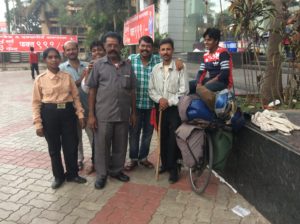
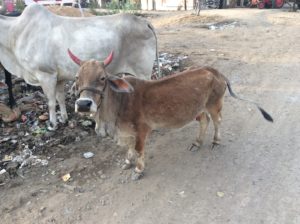
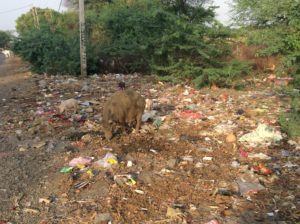
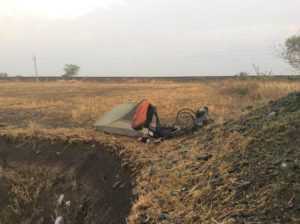
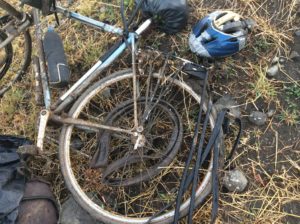
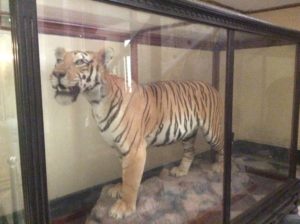
It took about two weeks to ride the 1200 or so miles to Delhi from Mumbai. Winds were mild, terrain basically flat but many drenching rains were encountered as the monsoon was beginning. For the many motorcycles on the roads the rainstorms can be a problem but they can pull off and wait them out in what ever shelter can be found. A stoop or the eave of a house or one of the many outdoor, but covered restaurants are all available. Private property sort of gets suspended when it rains.
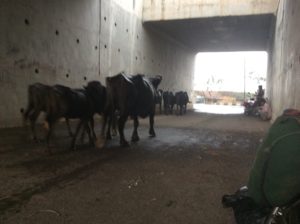
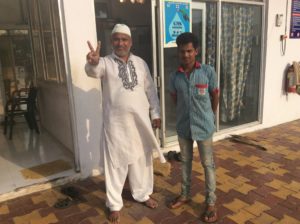
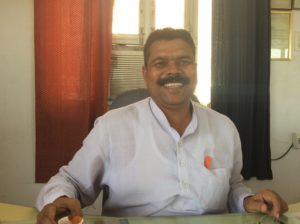
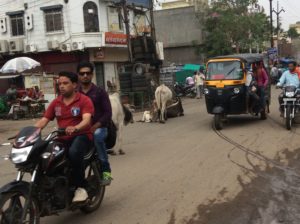
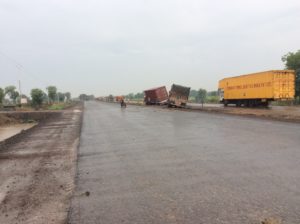
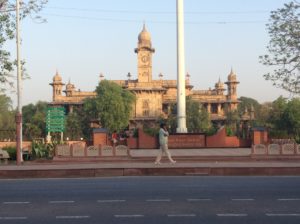
Advice from South African Willie Pienaar many months ago was to try an Internet based service called Warm Showers where people from all over the world offer a place to stay for passing cyclists. I finally got around to checking them out and found Ankit Agrawal in the city of Gwalior. I got to Gwalior after a 108 mile day and, in darkness, didn’t try to find Ankit’s place but instead got a hotel. Ankit came that night to the hotel and soon had a busy itinerary for me that included another ride with the local cycling club early the next morning. Fortunately he saw I was in no shape to get up at 5 am for the ride and instead let me sleep till 6 am and then go on a much shorter trip with just him touring downtown. That afternoon we rode from Gwalior to the town of Banmore and on to nearby Sran Farm House where I stayed a couple of nights with a family of Sikhs that were his friends. Ankit keeps a travel blog and wrote of our stay at Sran here.
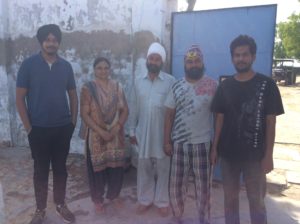
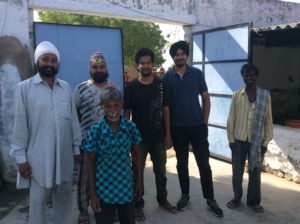
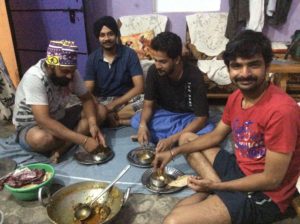
Sran is owned by the Singh family. Staying there, and even being put to work, was a window into how rural Indians live. As might be expected, farmers keep busy. I helped install an electrical transformer to get power to a house, loaded up and transported concrete power poles for use in getting electricity to a well pump, did some weeding. Got to drive a tractor for the first time in many years. After being amazed at the number of motorcycles on the roads loaded with four people, I got to be one of the four while riding to a nearby town. There are certainly differences in our cultures, but in the end I was amazed at how similar our lives are. They have the same group efforts to get work done and the same kind of chores and projects you would expect on any American farm. Core values are essentially the same.
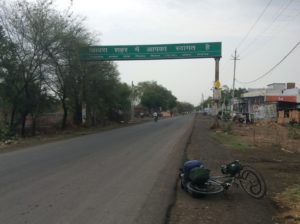
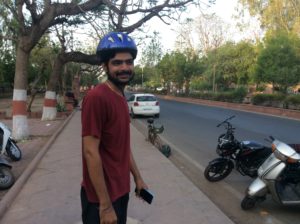
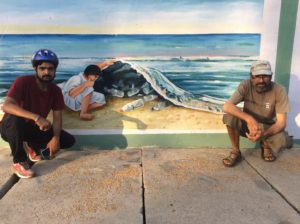
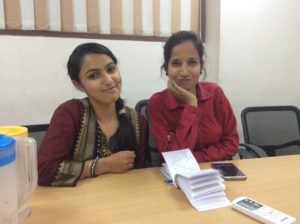
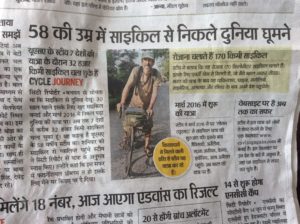
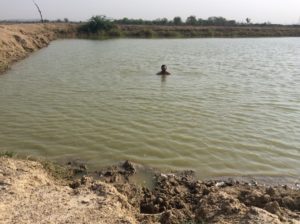
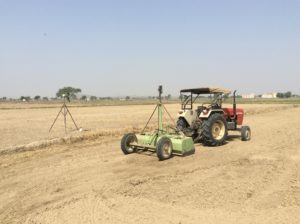
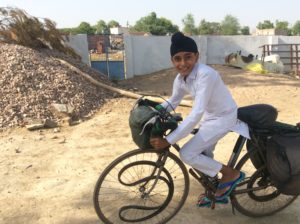
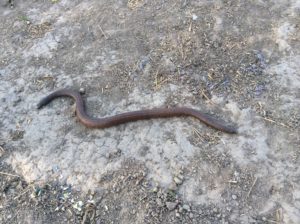
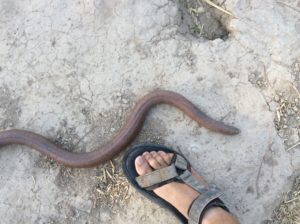
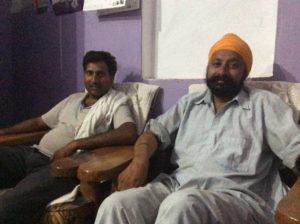
The route north of Gwalior went through Agra, home of the Taj Mahal, and I figured I owed it to myself to see it. It involved standing in several lines, some security related, others collecting money, and then a procession over the grounds to the white marble mausoleum recognizable from the post cards. I was glad I saw it but the pictures probably do it justice.
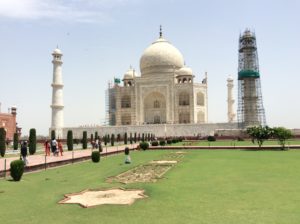
Two more days ride brought me to Delhi and a treasure hunt for embassies and bike shops. I found a hotel for $30 a night (with breakfast!) located in Nehru Place in the downtown. It was about a ten mile ride to the embassies through horrendous traffic. In the next two weeks I would make the ride about eight times. I was trying to get visas for both China and Pakistan with the intention of riding the Karakoram Highway from Islamabad to Kashgar, China. This route would have taken me close to K2 and I was hoping to spend some time in the area. It didn’t happen; after over a week of jumping through hoops for a Pakistan visa it was denied. I was both relieved and disappointed. Pakistan would have been a more dangerous place but the Himalayas and the route through China to Mongolia really looked worthwhile. So, with Tibet still off-the-scale expensive, not to mention the closed borders with Nepal, I decided to fly to Ulaanbaatar, Mongolia, a “walk in” country for Americans, and try to get a visa to Russia. I suspect there other alternatives for Tibet and I may one day get back here to fill in the gap.
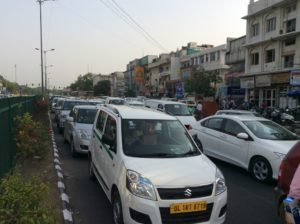
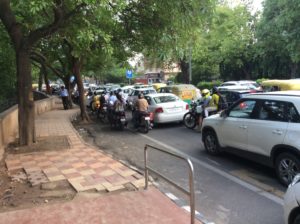
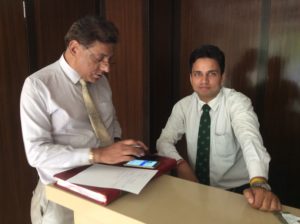
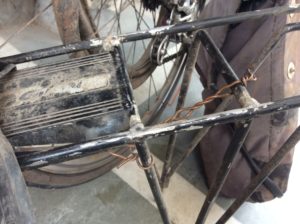
I’m in Ulaanbaatar now and the Russian visa will take another two weeks. I am, however, somewhat more confident that it’s going to happen. The Russians are a little more forthcoming and speak English well. The only downside is that the season is advancing and I’ll need about three months to get through Siberia if I take the Kolyma Highway (the Road of Bones) to Magadan on the east coast. I’ll be encountering snow flurries at some point. In the mean time I’m being treated very well at the Good Karma Hostel and at a reasonable price, breakfast included. There are mountains here and I may take a few days to do a backpack trip. The climate, latitude and situation among mountains is comparable to Boise, Idaho. Ulaanbaatar itself is unlike the typical Asian city, being much more Western, and it reminds me of Boise in many respects. The traffic is far more orderly and the continual horn honking of India (for which I wore earplugs) is greatly diminished. Mountain slopes with blue-black conifers on northern exposures and grassy south sides are a sight I haven’t seen since leaving Utah. I took a short hike yesterday in the foothills and found larch, spruce and pine trees as well as many familiar plants. At 47° North, I’m getting into circumpolar latitudes where ecosystems over the eons have migrated east and west round the globe until they meet. I’m half way around the world but it feels like home.
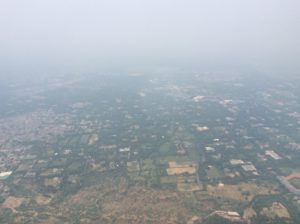

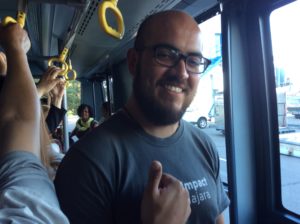
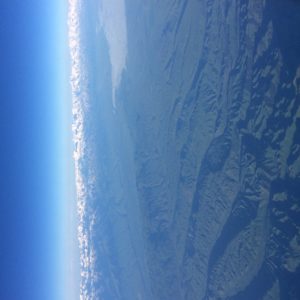
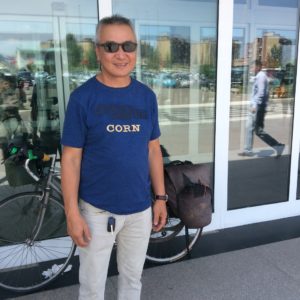
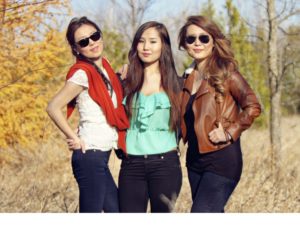
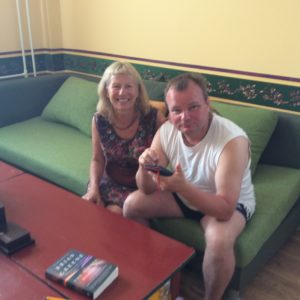
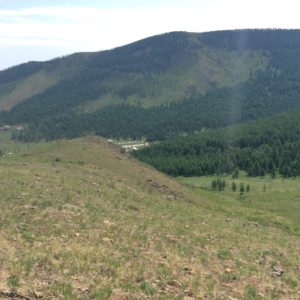
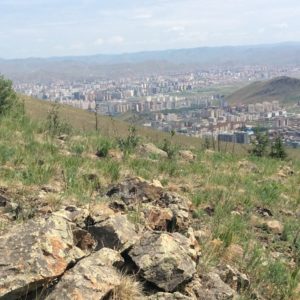
Below is a link to the television interview with Tefera Ghedamu in Addis Ababa. It’s long, the lip synching off by a few seconds, my on-the-spot arithmetic not very good, and I could have used a map in front of me.
http://www.ebc.et/web/en/-/meet-ebc-interview-with-cyclist-traveler-steven-walker-may-25-2017
WWoww… This’s a long trip, all things you passed make me wana go with you! haha
Hey Steve. This is Ken Fake. Tim Delaney just posted in Facebook that you were on this 2 year bike trip. I’m amazed that you would do this but also think it’s such a great thing. Your pictures are fascinating and I saw your interview. Writing a book is a great idea as not many people can write about what you are doing. I’m proud of you and hope you stay safe and healthy. Can’t wait to read your book.
I’m going to attend the 40th reunion this year. Haven’t seen my old friends for all this time and looking forward to it.
Steve,
Thank you so much for alerting us to your splendid adventure! We’ve spent the last hour browsing through your blog and lots of your great accounts and photos.
I wish we’d known about your trip sooner. We were in Chalten again this year from January 1st – April 13, and it sounds like our time there overlapped – sure would have been great to spend some time in the mountains together.
Everyone here is wishing you safe continued travel. We’ll be thinking of you and checking back for updates!
Cheers and all the very best from us all,
Hjördis, Bernd, Finn, and Susanne and Herb (91yrs.)
Steve!!!
Happy (belated) 4th of July, I have thought of you many times and decided to send a quick note because I have been a slacker.
Following every post with eager anticipation for the next one, and enjoying the point of view from your saddle.
Congrats on meeting up with Zeke!! That’s awesome.
AAnd something you may want to get on your iPad is the Google Translate app. It’s pretty magical, but you get the app, and then download the language addition you are translating, and then just point your camera at the words and it converts it to English. Pretty crazy, but I just used it in Croatia and Bosnia successfully and was blown away that this exists.
Keep on pedaling! And keep making new friends and enjoying the ride. I will send an email soon to catch up.
PV
Steve, very glad to hear from you! I am amazed at 1200 miles through India and now Mongolia that is reminiscent of Boise! I am completely awed by your travels. Good luck and best wishes on your next journey leg.
Happy 4th of July!
Wow, Steve, just incredible!!! On the map it looks as though you have traveled 2/3 of the world! Your descriptions of India make me feel as though I’m right there with you, with the traffic, noise and, I can imagine, smell 🙂 I can’t believe how well your bike has held up over all these miles! As well as you body, lol, man, that’s A LOT of miles!!!! Always warms my heart, the wonderful people you meet along the way. Your are a special person, Steve! Safe travels!!!
Plus you’re famous! Love the newspaper article with your photo. So cool!
Steve:
The interview was great. Both interviewer and interviewee were really good. So glad to hear you will be writing a book about this. Your blog posts are very well written so you are off to good start on that.
I know you have seen a lot of exciting things-but when I saw that you were at the Taj Mahal I thought that was something else. Also your wanting to see Robbin Island that must have been cool.
Good luck on getting into Russia in a timely fashion. I will hold good thoughts about your getting through Siberia before winter hits. Be careful and use your well honed good judgement.
Oh and I did check out Ulaanbaatar on the internet and your right–the way it is situated in the mountains its very similar to Boise. Take care and safe travels–we will all be following you on this next leg.
Dear Steve,
wonderful time spent with you in Gwalior, you are such a nice & brave person whereas persons like me only dream about World Tour, but you are exploring whole World which also on Cycle, hope we again meet in near future.
Dear Steve,
You are always inspiration for me to explore this wonderful world and met new people.
Beautiful written Blog.
Thank You for mentioning me.
Ankit